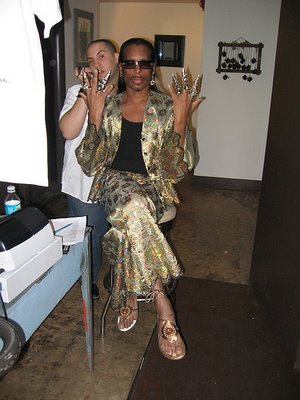
Sometimes on a legendary night
like the closing of the Garage
When the crowd is calling down the spirits
Listen
And you shall hear the footsteps
of all the houses who walked there before
— Malcolm McLaren, "Deep in Vogue"
Late this evening, Prancilla sent me an email telling me that the legendary voguer and New York nightlife star Willi Ninja passed away yesterday after a long struggle with HIV disease. He was 45 years old. Several other bloggers have tributes up to this truly remarkable dancer and personality, who reflected the brilliance of Black and Latin@ diasporic and gay syncretic dance and cultural forms in his practice and persona as Diva and Ballroom voguer (legendary).
Most of you are probably familiar with Willi from his key appearance in Jennie Livingston’s 1991 documentary Paris is Burning, which examined the ballroom scene of New York City in the late 1980s. Livingston’s film was in many ways a case of being in the right place at the right time: She captured almost by accident the vibrant yet ephemeral world of Black and Latina/o LGBT people and their celebrations of self-transformative identities right as that world was being changed by HIV and shifts in popular relationships to voguing as an art form.
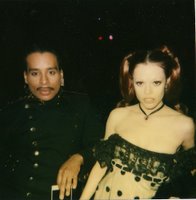
Shortly before Livingston’s film debuted, voguing and the challenging world of ballroom culture exploded as a trend, first through Malcolm McLaren’s ballroom-inspired 1989 album Waltz Darling (with its single featuring Willi, “Deep in Vogue”), then of course through the queen of appropriation herself, Madonna, with her white-washed cover of the voguing phenomenon, "Vogue." Yet Madonna’s attribution of Classic Hollywood Cinema stars to the voguing phenomenon was misplaced, for both voguing as practice and the ballroom culture as an expression of sophisticated Black and Latina/o urban forms of cultural syncretism were in fact grounded in more contemporary and immediate aspects of race, class and glamour: popular magazines, fashion, the city, and dance music. As much as I love her, Bette Davis really had very little to do with it.
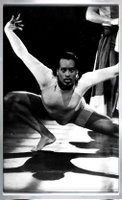
Of the voguers featured in Paris is Burning, Ninja stood out for developing a particularly athletic style, featuring difficult positions and limber movements, quick pose changes and, of course, irony and attitude. Ninja parlayed his talent into teaching models and socialites, appearing in music videos, film, and on television (including Marlon Riggs’s groundbreaking Tongues Untied and How Do I Look?), recording dance music, and hosting nightlife events in New York City. You can see his music videos here and here, and listen to one of his tracks for free here (after the long queeny intro, which is worth listening to as an example of the Black/Latin@ gay accent). This song, “Hot (for you),” is also available for purchase on ITunes. He follows several other prominent stars of Livingston’s feature that have succumbed to HIV disease, including fellow legends Angie Xtravaganza and Dorian Corey.
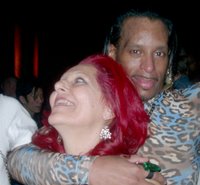
I first saw the brilliance that was Willi at a benefit screening of Paris is Burning in San Francisco in 1990. I had just moved west, and felt a strong identification with the film, not only because I had been marginally associated with the scene through friends from New York City, but also because of the powerful and rigorous vision of self-identity and social critique that Paris is Burning offered gay men of colour. Livingston’s film turned out to be controversial for many str8 critics of colour, not the least of which was bell hooks, who panned it. Alternatively, the film received vast praise from post-structuralist theorists working on gender and sexuality, most prominently Judith Butler. Those debates seem very distant, like the echo of conversations from another place and time.
In the end, of course, Livingston’s film has had incredible staying power, as a vital and important documentary that, almost in spite of itself, serves as a platform to hear the voice of a particular marginalised subculture at the height of its fruition. What Livingston’s film does, for me at least, is preserve a peculiar moment in time that includes and envelopes me: the dancing, the music, the scene all bring back strong memories of being young, angry, scared, and joyous in the late eighties, growing into ourselves as peculiar expressions of class, race, and sexual identity in a dark time, of HIV disease, drug use, homophobia, and economic insecurity.
While on the face of it the gilded halls of Prestigious Eastern U. had little to do with the Harlem ball scene, in my mind and the minds of my cohort of young queens of colour at PU, they were closer than one might have suspected (not the least of which were the connections some of our crowd had with the scene itself in New York). From the snap-pivot to language/argot to the centrality of dance and dance music to shade (learning and deploying) to reading to the highly conscious awareness of appearance and the power of verisimilitude, we were engaged in our own version of ballroom culture, the stakes of which would be as disastrous and tortured as what befell the Harlem voguers after their fifteen minutes of fame were up.
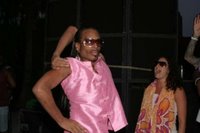
The strange refraction of race and class and gender through education and privilege and identification was a process that resulted in a lot of damage, but drew some of closer to those we had “left behind” while driving others away, towards a peculiar expression of assimilation. While our str8 compatriots either bought into the promise of non-offensive racial identity ("incognegro") or alternatively festishised Malcolm X and began wearing leather amulets with images of Africa on them, "the children" (New York slang for LGBT folks of colour) were listening to Shep Pettibone and Kraftwerk, dancing, and shopping. We were accused, as the voguers of Paris is Burning, of not taking our political responsibilities seriously. However, the real difference was between methodologies of activism, one of insouciant joy versus banal sobriety, irony versus deadly dull seriousness. Being gay and of colour meant, at least in the eighties and at least for myself and the people I knew, recognising one’s essential alterity from standard notions of race and community, and struggling to figure out a way to accommodate such differences in one’s life and politics in an engaged way, a process central as well to the ballroom scene. We children were interested not in returning to ancient origins or, alternatively, the sixties, but in living in the moment as creatures of modernity and the city, in creating new communities that acknowledged who we were.
For my summer class, I screened Paris is Burning, and Prancilla came to class that night to discuss the film with students. I don’t remember the nature of the conversation, but what I do remember is the joy of discussing this moment with my doublegood girlfriend Prancilla, and the connection and bond between us that it spoke to, both as viewers and gay men of colour. How, in some ways, and in a manner very different from, say, Tongues Untied, Paris is Burning was a cinematic expression of ourselves and the moment of our emergence as gay men of colour, playful and ironic and pissed off at the world and fabulous and full of attitude. Willi Ninja, along with the other queens on Livingston’s celluloid, speaks to us and through us, and is thankfully forever preserved in his brilliance and temporality.
I mourn tonight Willi Ninja, another sister passed on, a true legend, a talented and accomplished artist. I’m going to put on a little SalSoul and Larry Levan, sit back, have a smoke, and think of Willi, Angie, Dorian, and all the other great LGBT legends who have made us who and what we are, who form on some essential level part of ourselves.

Pop, dip, and spin, girl! Work it, Miss Thang!
Through memory we honour their presence and contribution and keep them, and ourselves, alive.



10 comments:
That's so sad that Ninja passed away. I have to admit, though, that I always found Paris is Burning voyeuristic and maybe even a tad exploitative.
We've definitely lost a true Legend in the dance world. I knew Willie for quite a long time and wil always respect his status as an icon.
Peace
Crazy Legs
Rock Steady Crew
First of all I am on your blog because I am saddened by the death of Willi Ninja. I found your blog by doing a search for him on Technorati.
I need to post a comment about your blog post. It's very easy to dismiss Madonna, in fact her persona thrives on the dismissal.
However, you say that Bette Davis has very little to do with it. It might be true that Bette Davis, as an individual had very little to do with the scene Jennie Livingston captured on film. It is not true that 20th century Hollywood did not have very little to do with the evolution of this culture. Even Dorian Corey said in the film that the "we wanted to look like Marilyn Monroe". The birth of the culture was a response to the larger American culture and it took place long before the 1980s.
I would agree with "anonymous" that Madonna is an easy target. My point wasn't necessarily about the influence of Classic Hollywood Cinema (CHC) on the scene itself, for CHC forms a basis for all subsequent media and visual representations for everybody (black, white, Latin, purple, etc), especially in terms of the star and glamour. Rather, what I disliked about Madonna's song (and honestly, still deeply dislike about it) is that it dismisses out of hand, or rather obscures, the decided racial element of voguing by focusing exclusively in its lyrics (and really, in the video as well with its CHC aesthetic and white voguers, including that weird buffed-out white dude) on CHC, eliminating completely the specific racial and diasporic element of voguing, for the specific purpose of marketing the song (and fad) to a mass (white) audience that did not want to see the racial element of the phenomenon (this was the late 1980s, of course a very different time, when Black musicians could not get a moment on MTV and white Americans still needed their coloured culture diluted).
White girls in the suburbs playing Joan Crawford with their dolls and wire hangers did not come up with voguing and ballroom culture. White boys emulating James Dean did not evolve a cultural and dance practice that spoke to idealisation of the star but also the dynamics of race and identity in the city. Those people (white America) were sold a specific bill of sale (via Madonna) that was essentially, as the post indicates, white-washed. Let's refresh by looking at her list: "Greta Garbo, and Monroe, Dietrich and DiMaggio. Marlon Brando, Jimmy Dean ... Grace Kelly; Harlow, Jean ... Gene Kelly, Fred Astaire, Ginger Rogers, ... Rita Hayworth (OK, a secret Latina) ... Lauren, Katherine, Lana ... Bette Davis." While indeed these stars form a sort of deep unconscious to our ideas of glamour and elegance, there connection to voguing, which emerges as a named dance practice in the 1970s and early 1980s, is tenuous at best. In fact, even for mainstream (white-dominated) culture their influence had faded so considerably by the 1960s they were pastiche, a joke, Joan and Bette in "Whatever Happened to Baby Jane": the monstruous destruction of the glamorous star. The very fact that voguing was done by Black and Latin@ queer folk is buried under this list, suffocated by it actually. But it makes sense to an audience that would never see itself reflected in Pepper LaBeija or Dorian Corey or Willi.
You are correct in observing both the longevity of the scene (stretching back in the 1950s and 1960s) and in identifying the influence, via Corey, of Marilyn Monroe and late CHC stars in the early ballroom culture. CHC stars are still, to a certain extent, kept alive by LGBT people more than their str8 "coutnerparts" through Camp, although where that stands is hard to say (See Daniel Harris, "The Death of Camp" in "The Rise and Fall of Gay Culture"). But Corey goes on to say, right after she makes the point of Monroe, that the culture has evolved and moved away from such representations (Pepper says, "Models, Iman, Christie Brinkley," etc), an evolution Madonna conveniently elides in her pop confection. What I was trying to get at here was the sense in which voguing and ballroom culture are racialised and gendered and temporalised (in time) in really immediate and specific ways, that are important in understanding how they work: the disco, Gay Lib, dance music, media stars of the 70s, fashion industry, modernity. The children weren't voguing to old movies, after all, they weren't keeping a mausoleum to dead Hollywood stars up at the Elks Lodge. they were voguing to contemporary dance music. The deracialised commercial blip via Madonna (and others) could fade into a faddish moment, and become a joke (try Googling "vogue" and "voguing" in an image search and you will see what I mean: pictures of anybody posing for the camera becomes a "vogue"), but this subculture was not a fad and was not a joke, it was a technical and cultural practice that contained and spoke of something with very real importance in understanding LGBT identities of colour in urban contexts.
So, long story short, that's my beef with Madonna and "Vogue." It is nice to hate her, even as we continue to buy her shit (sorta kinda).
I posted the Anonymous post earlier about Madonna. I need a moment to read through your follow up post. I thought more about Willi and about what I wrote in that time. Dorian Corey does follow up that statement about Marilyn Monroe with "what I really wanted to be was Leana Horne". This is an important and very telling statement in the movie.
What a great entry! I certainly remember him. As usual, you've given me a lot to think about.
Even though i just started vogueing i've seen Willi Ninja in many a video. Im only 17 but im an up and coming femm queen and though I didnt know Willi Ninja personally he was one of my idols when it came to the old way..
Rest In Peace Willi Ninja
Damn i remember seeing willi ninja on kimmel and thought he was friggin hilarious. he sure was one of a kind. I just asked Tom Green to have him on his show but i had no idea he passed away. : (
I toured with Willi... even tho I was older then he/she... always felt like a father/mother figure to me.. I cant believe youre gone... it was very sad for me to see this... rest in peace my friend Willi
Joann
Thank you for this article. Your links and critiques are wonderfully on point. I never knew Willi Ninja, but as a performer and entertainer that I, too was, and still am inspired by the voracity with which she attacked her work. She, I believe, singlehandedly created the Vogue Femme category so celebrated and emulated in today's ball scene. Legendary. Iconic.... Words pale in comparison to the life so Fabulously Lived in The Living Technicolour by one Ms. Willi Ninja. Thank you for a tribute that is befetting, as it exalts and celebrates Her life.
Post a Comment